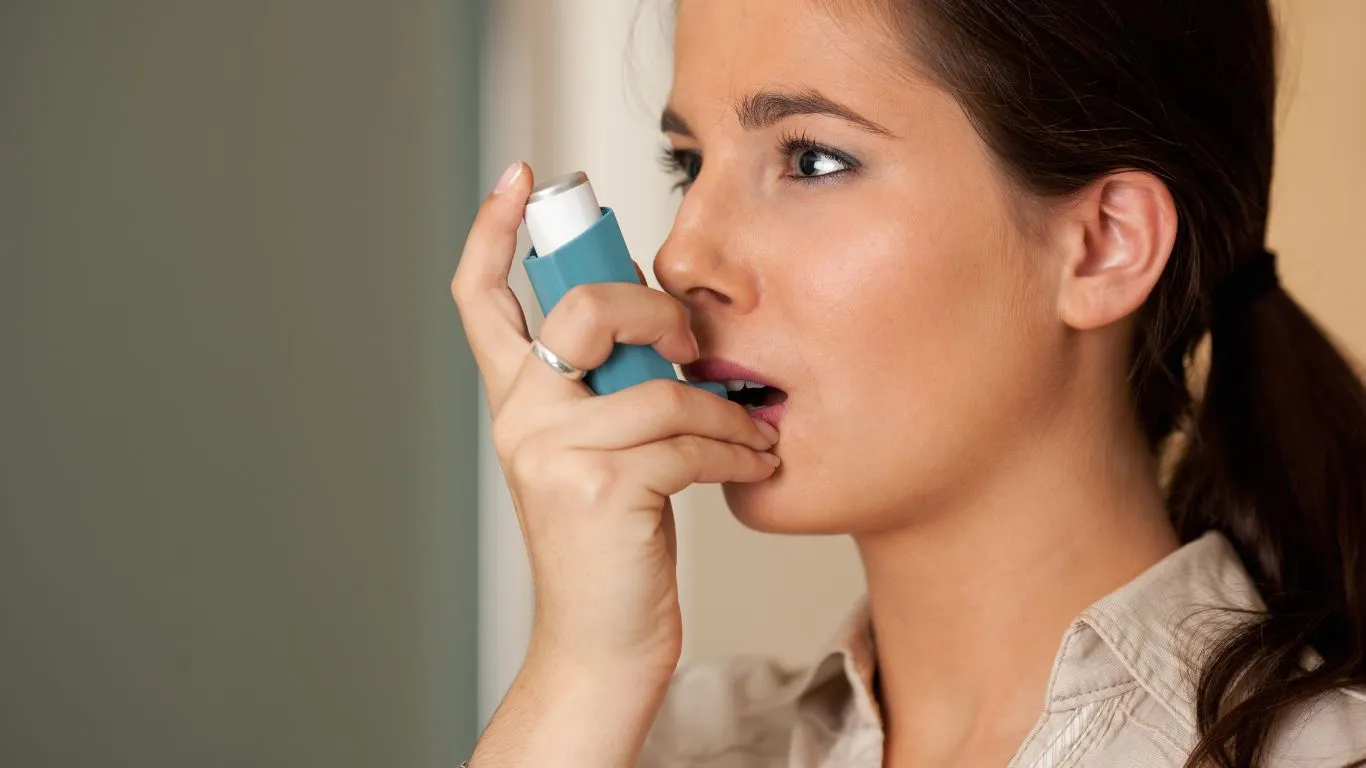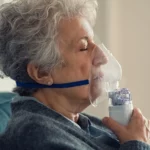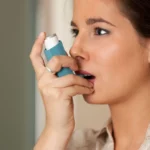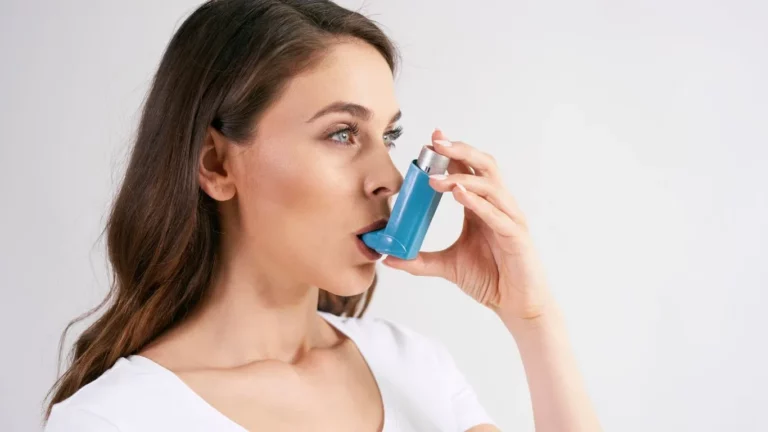Common Asthma Inhaler Mistakes: How to Avoid Them and Use Your Inhaler Effectively
Using an inhaler correctly can make a world of difference in managing asthma. Yet, many people make common mistakes that can reduce its effectiveness. Let’s talk about those mistakes and how you can avoid them for better asthma control.
Living with asthma isn’t always easy. It requires vigilance, planning, and understanding the best ways to manage your condition. One key aspect is the use of an inhaler, which is a primary tool for delivering medication directly to the lungs. Unfortunately, a lot of people make simple inhaler mistakes that can affect their asthma control. So, let’s go over these common errors and how to avoid them.

Why Correct Inhaler Use is So Important
When you’re using an inhaler, the goal is to get the medication into your lungs as quickly and effectively as possible. If you make mistakes, you could be wasting your medication or even risking an asthma flare-up. Correct inhaler technique is essential for asthma management.
I’ve seen patients who used their inhalers wrong for years without even realizing it, and it really can impact their asthma control. So, let’s dive into some of the biggest mistakes people make with inhalers.
Mistake #1: Not Shaking the Inhaler
This might sound like a small thing, but it’s one of the most common mistakes. Most metered-dose inhalers (MDIs) require shaking before use. If you don’t shake it, the medication might not be delivered properly, and you won’t get the full dose.
Why it matters:
Some inhalers have a liquid component inside that needs to be mixed before it’s sprayed. If you skip this step, you’re not getting the medication you need.
Solution:
Shake the inhaler well before each puff, and don’t skip this step—even if you think the inhaler is already “ready to go.”
Mistake #2: Not Using a Spacer
A spacer is a device that attaches to your inhaler to help deliver the medication more effectively. Many people don’t use it or don’t use it correctly. This can lead to the medication ending up in your mouth or throat instead of your lungs.
Why it matters:
Without a spacer, some of the medication might land in your mouth, causing irritation, or it won’t get into your lungs effectively.
Solution:
If you have a spacer, always use it. It helps the medication reach your lungs better and can even reduce side effects like hoarseness or thrush.

Mistake #3: Inhaling Too Quickly or Slowly
The speed at which you inhale can also make a difference. If you inhale too quickly, the medication might not get deep into your lungs. On the other hand, inhaling too slowly means you might not get the full dose of the medication.
Why it matters:
The right inhalation speed is essential for effective medication delivery. Inhaling too fast or too slow can mean you don’t get the full benefit of the medication.
Solution:
Inhale slowly and deeply, holding your breath for about 10 seconds after each puff to allow the medication to settle in your lungs.
Mistake #4: Not Timing Your Doses Correctly
If you need more than one puff, not waiting long enough between doses can affect how well the medication works. Many people rush through the process or don’t give their inhaler enough time to work between puffs.
Why it matters:
If you don’t wait long enough between doses, you may not get the full benefit of each dose, and it could reduce the effectiveness of your asthma treatment.
Solution:
Always follow the instructions that come with your inhaler. Typically, you should wait about 30 seconds to a minute between each puff to give the medication time to work.
Mistake #5: Holding the Inhaler Wrong
It’s easy to forget how to properly hold an inhaler, but holding it incorrectly can cause the medication to be delivered improperly. For example, holding the inhaler too far from your mouth or at an odd angle can prevent the medication from reaching your lungs.
Why it matters:
The proper position ensures that the medication is directed into your airways instead of just going into the air or your mouth.
Solution:
Hold the inhaler at arm’s length, with the mouthpiece facing toward your mouth. Make sure to follow the specific instructions for your type of inhaler.

Mistake #6: Forgetting to Rinse Your Mouth
After using an inhaler, especially one with a corticosteroid, you may experience a dry mouth or a risk of fungal infection in the mouth and throat (like thrush). Some people forget to rinse their mouth after inhaling, which can lead to this problem.
Why it matters:
Rinsing your mouth helps clear out any leftover medication and reduces the risk of irritation or infection in your mouth and throat.
Solution:
After each use, rinse your mouth with water and spit it out to remove any leftover medication.
Mistake #7: Not Keeping Track of Medication Use
It’s easy to lose track of when you last used your inhaler or how many doses you have left. Some people don’t check their inhaler regularly or run out of medication without realizing it.
Why it matters:
If you’re running low on medication and don’t realize it, you may not have it when you need it most.
Solution:
Keep track of your inhaler’s dosage, and replace it before you run out. Many inhalers have counters to show how many doses are left, so check this regularly.
Mistake #8: Using an Expired Inhaler
I’ve heard of people using inhalers well past their expiration date. Just like with any medication, inhalers lose their effectiveness over time, and using an expired inhaler can mean you’re not getting the full dose when you need it.
Why it matters:
An expired inhaler might not work as well, leaving you at risk of an asthma flare-up.
Solution:
Always check the expiration date of your inhaler and replace it as needed.
Tips for Using Your Asthma Inhaler Effectively
- Practice your technique: It may help to practice your inhaler technique in front of a mirror or with your doctor. Perfecting your technique can make all the difference in controlling your asthma.
- Keep it clean: Make sure to clean your inhaler regularly to prevent it from getting clogged. Refer to your inhaler’s manual for cleaning instructions.
- Know when to seek help: If you’re still having trouble with your asthma despite using your inhaler correctly, talk to your doctor. You may need a different type of medication or further advice on managing your asthma.

Conclusion
Using your inhaler correctly is crucial for managing asthma. Avoiding common mistakes like not shaking the inhaler or forgetting to rinse your mouth can make a significant difference in your asthma control. Keep these tips in mind, and don’t hesitate to consult your healthcare provider if you have concerns about your inhaler technique.
Remember, your inhaler is only effective when used properly, so take your time and follow the instructions carefully.
Stay safe, and take control of your asthma with the right inhaler technique!
Appendices
References
- National Asthma Education and Prevention Program. (2023). “Asthma Inhaler Use.” U.S. Department of Health and Human Services.
- Asthma and Allergy Foundation of America. (2024). “Using Your Inhaler Correctly.” AAFA.org.
- American College of Allergy, Asthma, and Immunology. (2024). “Asthma Management Tips.” ACAAI.org.
FAQs
- What is the correct technique for using an inhaler? The correct technique includes shaking the inhaler, inhaling deeply and slowly, and holding your breath for 10 seconds after inhaling. A spacer is also recommended for some types of inhalers.
- How do I prevent thrush after using an inhaler? Rinse your mouth with water after each use of an inhaler containing steroids to help prevent thrush and other mouth infections.
- How can I track the number of doses left in my inhaler? Many inhalers have a built-in counter that shows how many doses are left. Be sure to check this regularly to ensure you don’t run out of medication unexpectedly.
- What should I do if my inhaler stops working? If your inhaler seems ineffective, check for any blockages, clean it, and consult your healthcare provider for further instructions.
- Can I use an expired inhaler? No, using an expired inhaler can reduce its effectiveness. Always check the expiration date and replace it as needed.
Disclaimer: The information provided in this article is for general educational purposes only and should not replace professional medical advice. Always consult your healthcare provider for advice tailored to your specific condition.












